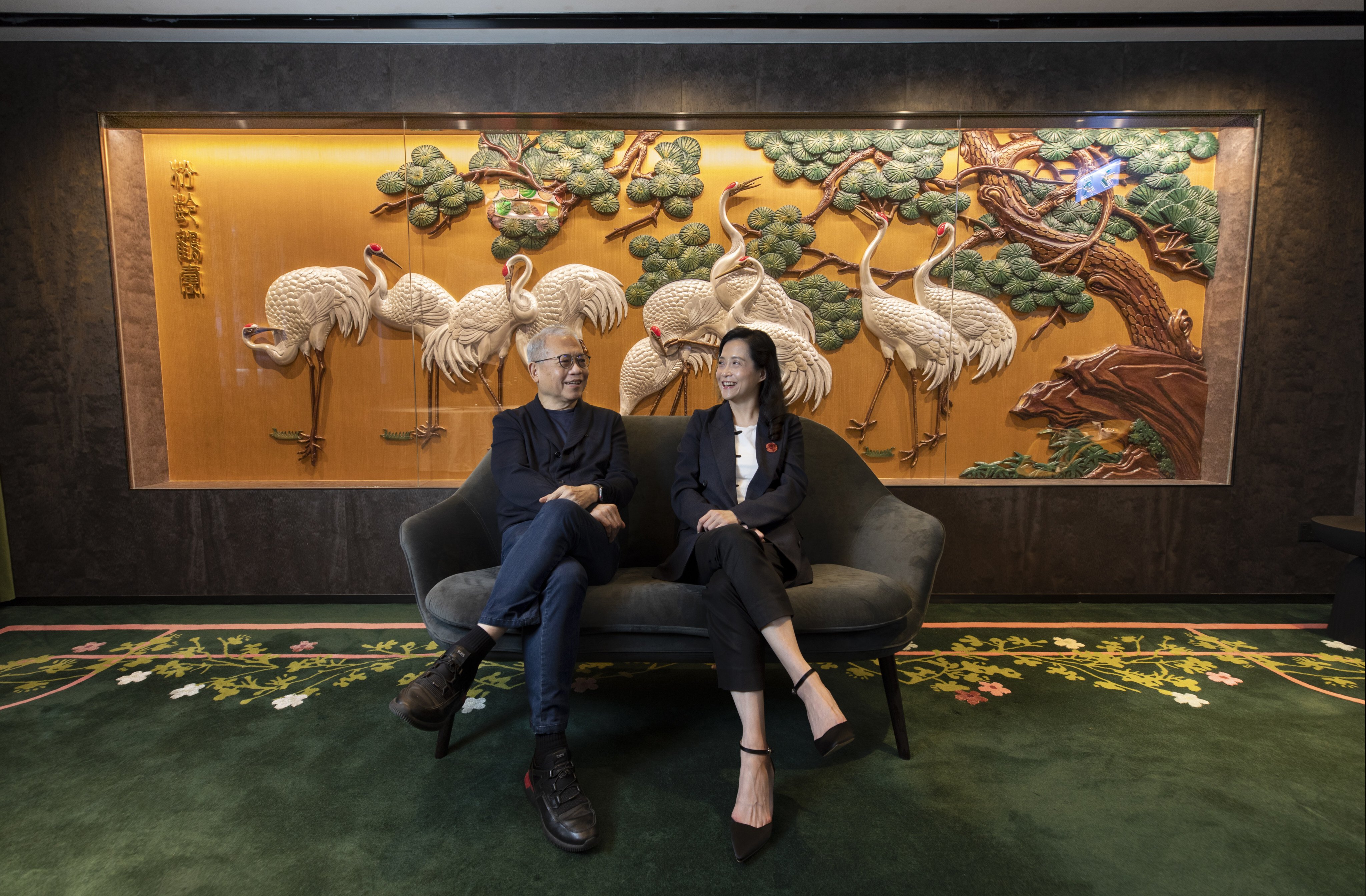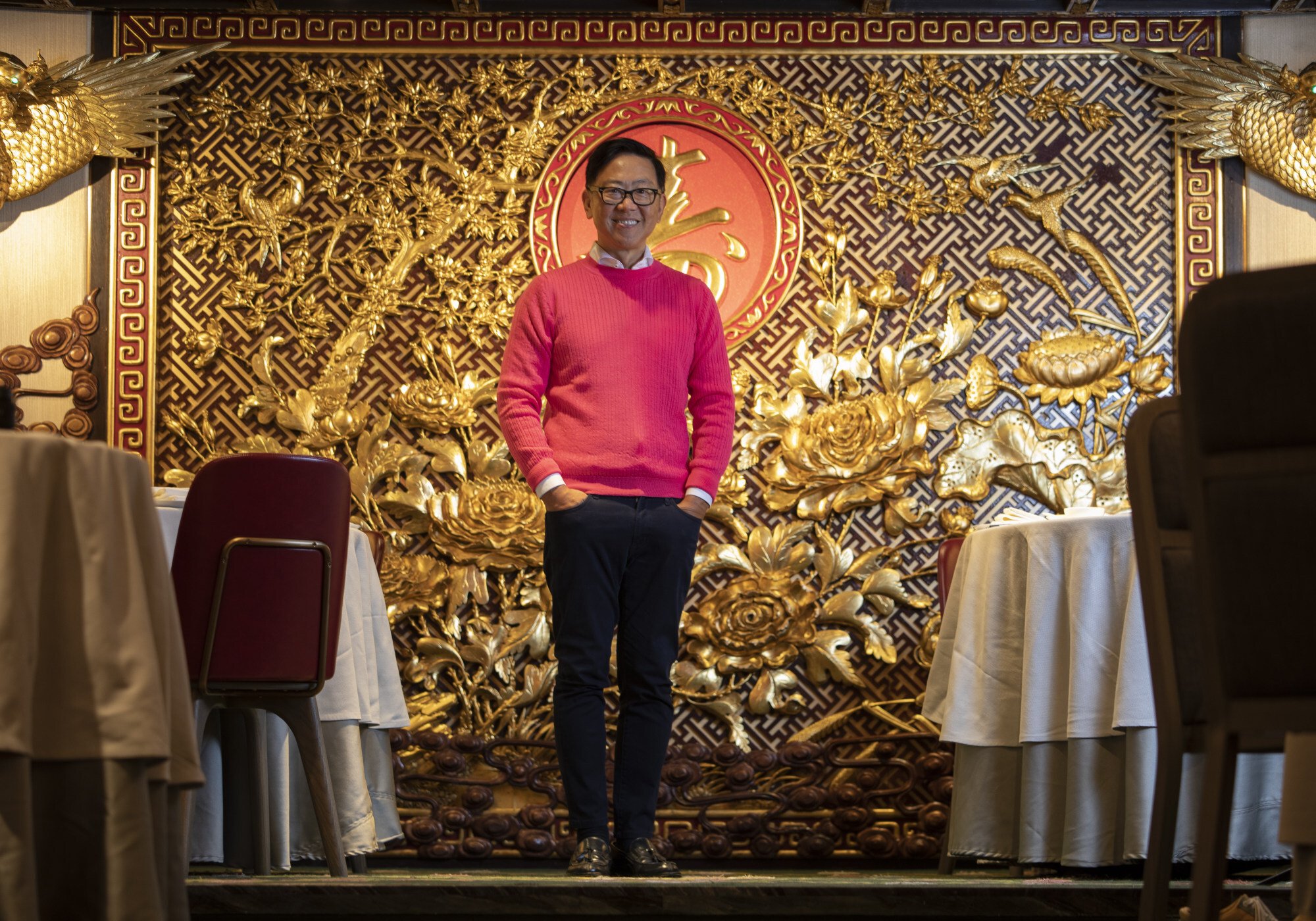
- Known for its charcoal-roasted goose, created by founder Kam Shui-fai over 80 years ago, Yung Kee reopened in October following a US$6.4 million renovation
Most Hongkongers are familiar with Yung Kee, the three-storey restaurant on Wellington Street, in Central, where myth has always had it that the higher the floor, the more expensive the dining experience.
After the dispute ended with one brother buying out the other’s shares, the restaurant faded from the headlines, and when the anti-government protests erupted in 2019, third-generation owner Yvonne Kam Kiu-yan felt it was time for Yung Kee to hit pause, take stock, and from 2020, move on following two of the most tumultuous years in recent Hong Kong history with a reimagining of the space.
Architect William Lim Ooi-lee, of CL3, who had refurbished the ground floor in 2015, was hired to remodel the other two floors, and as Covid-19 hit and the city’s service industry suffered, Yung Kee’s redecoration inched forward, reaching a cost of HK$60 million (US$6.4 million) before its doors reopened last month.

Lim is no stranger to the place. He and his nine siblings would often enjoy family meals with their parents on the second floor. And later, as a father himself, Lim remembers his two sons running up and down the staircase and playing at the ground-floor fountain.
The result is a restaurant that embraces its eclecticism, from the traditional Chinese antiques and art, to the gold dragon and phoenix banquet hall, the diner booths, and dark-green 1970s tiles lining the staircase walls.
“We think this is a great place to have the three floors represent different styles, different periods, so they can attract different types of clientele,” says Lim. “That’s the way hospitality design is heading. It’s not like you want to make a huge place with the same concept, you probably want to create different ambiences, nooks.”
While the renovation was under way, Yvonne Kam had called Lim to tell him excitedly that workers who were ripping out the carpet on the first floor had discovered beautiful pink tiles beneath.

“I was like, ‘What is this? How come there is tile at the bottom? I thought it was concrete,’” she recalls. “And then my father [Ronald Kam Kwan-lai] said, ‘Yeah it was like that before.’ I said, ‘What? This is so pretty!’”
The tiles, it turned out, were Italian and handcrafted, with floral designs. Yvonne Kam was unaware that her father had installed the tiles four decades earlier, in the ’70s, when he helped his own father design the restaurant.
Lim came over to assess the situation, and then modified the original design of the space and colour scheme to match the tiles, some of which had been damaged after spending 40 years under carpet, or as a result of various wall partitions.


“We put aside all the ones that were in a good enough condition and then relaid the whole floor,” says Lim. “Wherever we were short of tiles we did carpet flooring.” The result is an intimate dining room that gives the old tiles prominence, with carpet lining the edges.
Ronald Kam was in his early 20s when he returned to Hong Kong in the late ’60s from studying broadcast engineering in Taiwan and was instructed by his father to stay in town to help design and build a restaurant in Wellington Street.
“This is our building, so we splurged and installed expensive tiles to make people feel comfortable,” he says. “Father said he started with a dai pai dong [a street stall, in the docks, near what is now the Hong Kong-Macau Ferry Terminal, in 1936], selling roast meats [and progressed] to having a stall, to a restaurant, to a big building.”


Along the way Yung Kee moved first to Wing Lok Street, in Sheung Wan, in 1942 and then, in 1945, to Pottinger Street, before finally opening at its current location, in Wellington Street, in 1972.
In renovating the ground floor, Lim has retained the communal table setting and, in the back corner, has reinstalled the three booths where Taiwanese singer Teresa Teng would sit when dining at Yung Kee. Lim says Teng’s flower-patterned cheongsams inspired the screens on the first floor, which feature peonies and embroidered butterflies.
Families and small groups gather here for informal dinners in what feels like a cafe setting, surrounded by the pink, green and white colour scheme. Lim describes it as East-meets-West, a colonial feeling of the ’60s and ’70s. By the lift, a small bar area continues the theme. The sign behind the bar came from the restaurant’s previous site.


“We were cleaning up our warehouse and found the signage we’d used in our previous location in the 1940s, on Pottinger Street,” says Yvonne Kam. “On the surface you’d think it’s metal, but it’s wood. My father was super happy and he told William it was a treasure, and then William said he’d find a nice corner to put it up.”
Such a sign, carved from thick wood, is hard to find nowadays, says Lim, adding that this one was redecorated with gold leaf.
“Before the 1980s, people hired calligraphers to write the characters. But after, they used computerised fonts,” says Kam. “The special thing about the four characters is that the last one, ‘ga’, originally had a long stroke that looked like a sharp knife, and customers told my grandfather it looked as if he were using the knife to get lots of money from customers.
My grandfather treated Yung Kee as a son. When he was about to pass away, he said he wasn’t worried about any of his children, but the only son he worried about was Yung KeeYvonne Kam
“So he shortened the stroke and made it into a round shape. There’s lots of history here and maybe some stories are lost when passed on to the next generation, so I am still learning bits of the company’s history.”
The highlight of the second-floor banquet hall is the dragon and phoenix stage in three shades of gold with peonies and trees set against a wooden latticework.
In the middle is a round medallion that can be flipped to display either “sau”, longevity, or “hei”, double happiness. This is the dining room that Lim remembers the most from his childhood, where three generations would regularly gather around three tables for dinner.
“My grandfather treated Yung Kee as a son,” says Kam. “When he was about to pass away, he said he wasn’t worried about any of his children, but the only son he worried about was Yung Kee.”


Kam hopes with the renovation completed, diners will create new traditions at Yung Kee, whether it be a quick bite of roast goose with rice or wonton noodles on the ground floor, a casual get-together with family and friends on the first floor, or large family gatherings for special occasions on the second.
“My father promised my grandfather that in his lifetime he would keep and protect Yung Kee,” she says. “That was his commitment to my grandfather, so for me, I am just carrying on his promise.”

